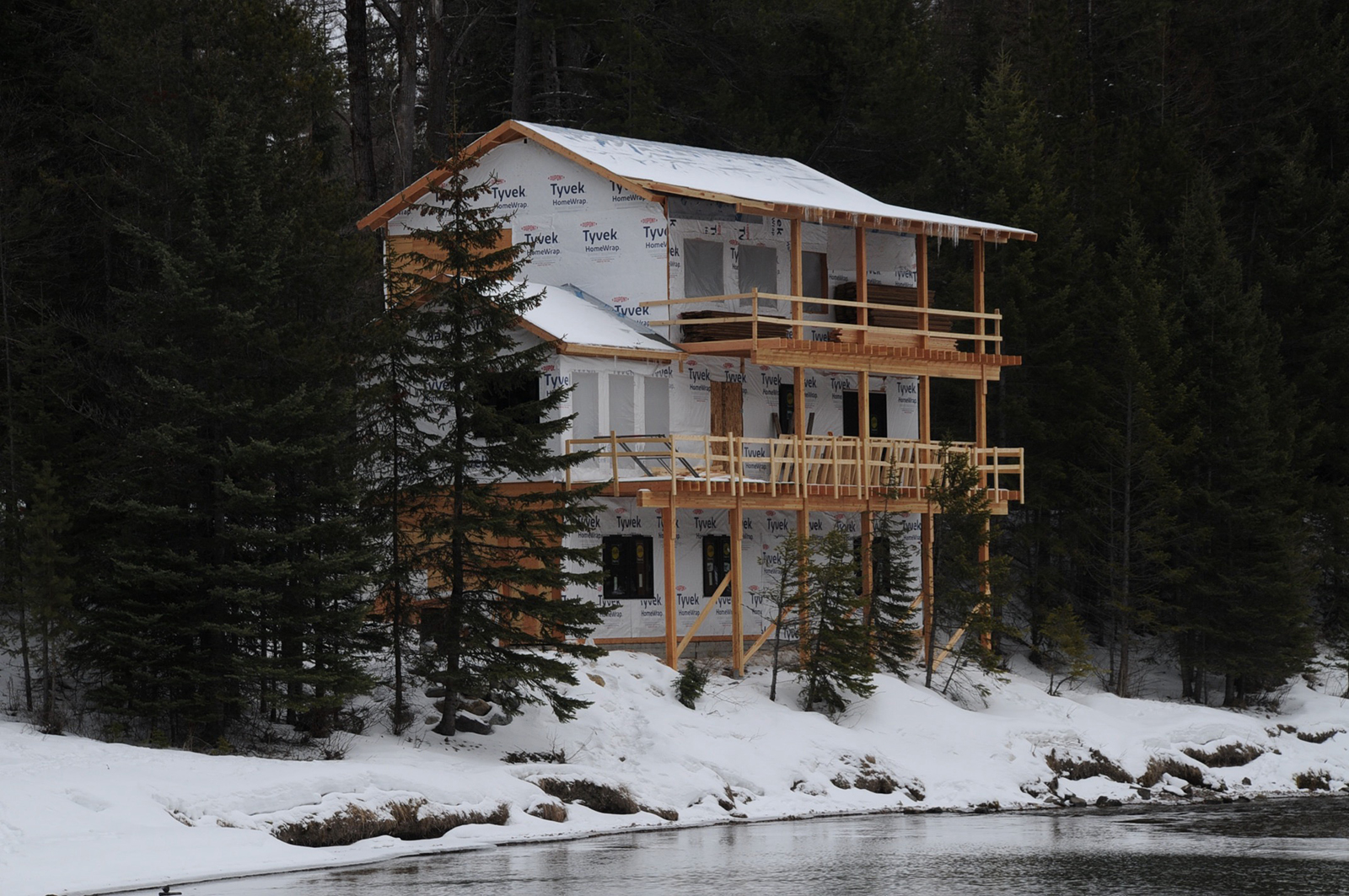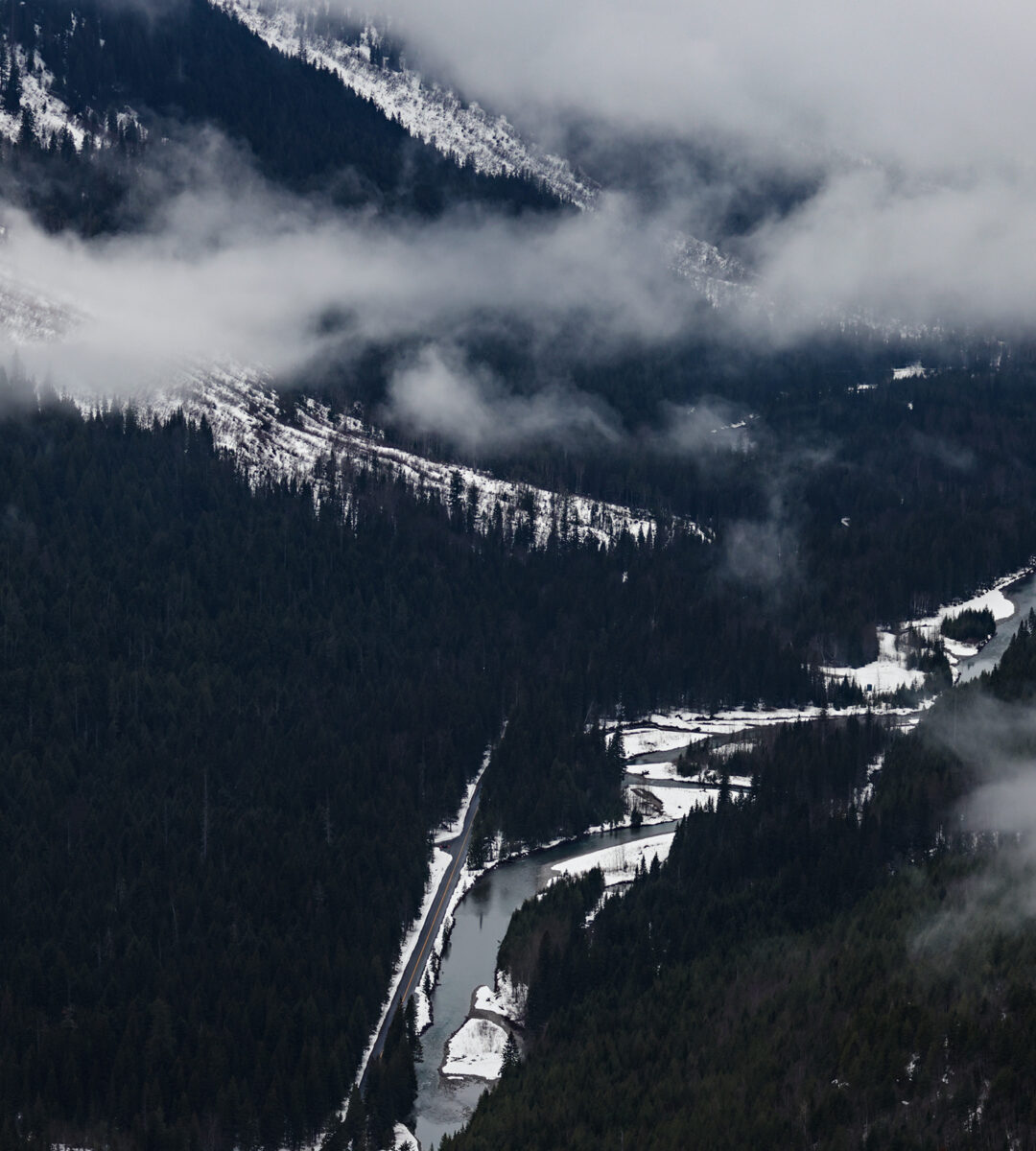Federal Judge to Hear Arguments Over Legality of McDonald Creek Home
The property owners argue Glacier National Park has exclusive jurisdiction over their private parcel inside park boundaries, and that it isn't subject to state environmental regulations
By Tristan Scott
The Flathead Conservation District (FCD) is headed to federal court next month to defend its position that a California couple who built a home on private property along the banks of McDonald Creek in Glacier National Park did so illegally and without a permit.
John and Stacy Ambler sued the FCD more than a year ago, submitting a petition for declaratory relief in U.S. District Court in Missoula, where they have asked Judge Kathleen DeSoto to weigh in on whether the conservation district — a political subsidiary of the Montana Department of Natural Resources and Conservation (DNRC) — “has jurisdiction and authority to order the Amblers to dismantle a house they are constructing on real property they own within Glacier National Park.”
In asserting its authority, attorneys for the FCD argue that the home’s location within the park’s boundaries does not preempt the enforcement of the state’s foremost streambed protection law.
Meanwhile, the Amblers say only Glacier National Park can govern private inholdings, stating the FCD “cannot unilaterally reassert jurisdiction over lands to which the State of Montana long ago ceded jurisdiction to the United States.”
“The only issue in this case is federal versus state jurisdiction over the Amblers’ property,” according to the plaintiffs’ final cross motion for summary judgment, which asks the judge to rule in favor of the couple and resolve the jurisdictional dispute without going to trial.
With briefing complete on all cross motions for summary judgment, the oral arguments are scheduled for Jan. 8.
The case began locally when residents in the West Glacier area complained about the construction project, clearly visible to park visitors and neighbors, which prompted FCD to conduct an onsite inspection. Following the inspection, FCD determined the Amblers had violated the Montana Natural Streambed and Land Protection Act by building on an immediate bank of McDonald Creek and excavating the stream bank to create a pad for construction, all without obtaining the necessary 310 permit to do so.
The FCD ruled that the Amblers must remove the home and remediate the streambed. However, the couple challenged the FCD’s jurisdictional authority in the case and proceeded to what’s called a declaratory ruling process, which was overseen by hearing officer Laurie Zeller, a retired bureau chief with the Montana Department of Natural Resources and Conservation (DNRC).
After reaffirming its jurisdictional authority, Zeller remanded the case back to the FCD, whose Board of Supervisors ruled that the couple must remove the home and repair the streambed no later than April 1, 2024.
Instead, the Amblers filed lawsuits in state and federal courts, arguing that the FCD overstepped its authority by ordering the home’s removal. As the legal saga drags on, the unfinished home remains visible to onlookers from the Camas Road.
The case is unique given the project’s location inside Glacier National Park, which when established in 1910 trapped private tracts of land staked by homesteaders prior to the park’s existence. Originally totaling 13,000 acres, many of the homesteaders sold their property to the National Park Service a century ago, but some remain.
According to the response to the Amblers’ federal lawsuit by Camisha Sawtelle, the attorney representing the FCD, “The location of the Ambler property does not preempt enforcement of a state law that is entirely consistent with the purpose of the National Parks.”
“Plaintiffs seem to also assert that regulations of Glacier National Park do not apply, suggesting that development on a private inholding on the bank of an iconic stream in Glacier National Park is essentially unregulated,” according to a motion for summary judgment.
The question at the center of the legal battle slated for oral argument next month is whether FCD has jurisdiction to enforce the Montana Natural Streambed and Land Preservation Act, which states that any private individual or entity proposing work in or near a stream that “physically alters or modifies the bed or immediate banks of a perennial-flowing stream” must first obtain an approved permit from the local conservation district.

According to the Amblers, neither Flathead County nor Glacier National Park — the two entities they argue should have the final say in the matter — required any permits to begin construction on the property and connect the residence to the Apgar Village water and sewer system.
“Glacier National Park allowed the construction and allowed the Amblers to connect to the Apgar Village water and sewer system,” the plaintiffs’ federal complaint states. “The Amblers dispute that the FCD has jurisdiction over the property and dispute that the [Natural Streambed and Land Protection Act] applies to the property.”
According to the FCD, Glacier National Park’s regulation of private inholdings is “limited and inadequate” while the enforcement of the streambed law “on a private inholding in Glacier National Park is entirely consistent with the purpose of the National Parks and does not interfere with, but rather supports, the purpose of the National Parks.”
“The [Natural Streambed and Land Protection] Act must be applied together with the limited federal regulations applicable to private inholdings,” according to FCD’s final cross motion. “Plaintiffs’ position would require this Court to trigger a regulatory nightmare as overextended Park Service employees would be charged with creating a system for regulating all activities on private inholdings in parks across the country. A regulatory framework would need to be created to monitor development on all inholdings. There are currently no such systems. Rather, existing state and local laws and regulations (such as the Act) apply to these private properties. FCD has jurisdiction over the Ambler property.”
The FCD also points to U.S. code and federal regulation restricting the construction of private summer homes or cottages in Glacier National Park after Jan 26, 1931, and prohibiting the construction of any buildings in “any park areas” without a valid permit.
“The Amblers failed to obtain a permit from the park. Logically this is because 16 U.S.C. § 162(a) specifically prohibits the Park Service from granting such a permit,” according to the FCD. “Although FCD’s position is the Ambler property is not under exclusive jurisdiction of the United States; if it were, the Amblers home would have been denied the required permit.”
Earlier this year, a group of West Glacier residents joined the federal lawsuit as intervenors, both to support the FCD’s position as well as to represent themselves as stakeholders. Assembling as a group called Friends of Montana’s Streams and Rivers (FMSR), attorneys representing the residents say it was important that their own sets of unique interests are represented in a case that’s likely to proceed through the appellate courts.